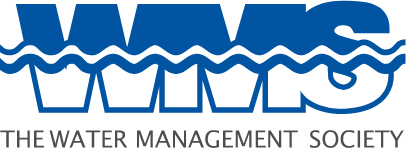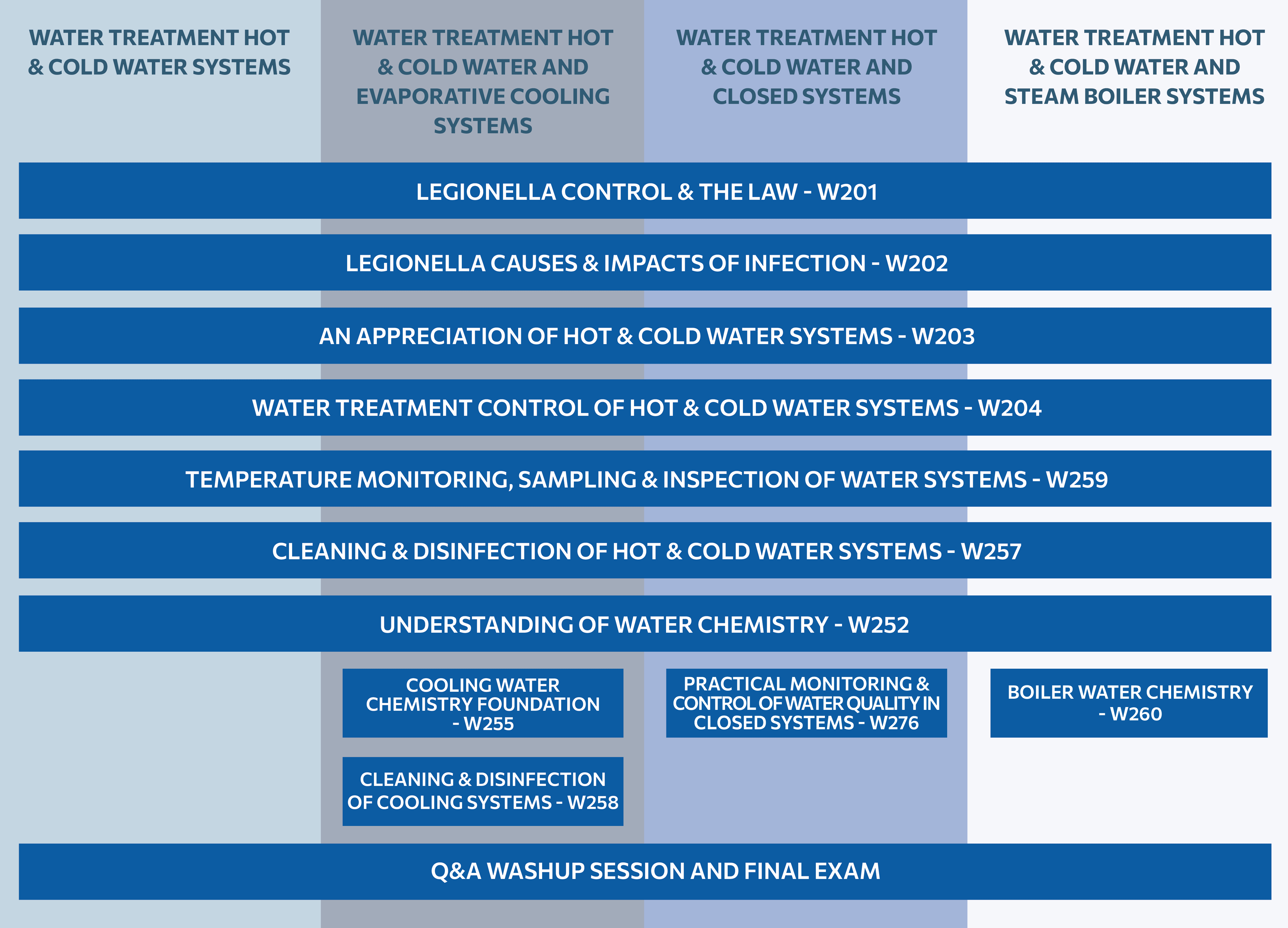Courses required to complete your Water Treatment Pathway
Knowledge / Skill / Competence Requirements “the building blocks”. You can download a copy of the Water Treatment Qualification Map here.
| Course Title | Course Type | |
|---|---|---|
Legionella Control and the Law - W201 |
LMS | VIEW COURSE |
Legionellosis Causes and Impacts of Infection - W202 |
LMS | VIEW COURSE |
An Appreciation of Hot & Cold Water Systems - W203 |
LMS | VIEW COURSE |
Legionella Control of Hot & Cold Water Systems - W204 |
LMS | VIEW COURSE |
Water Treatment Chemistry Foundation - W252 |
Course | VIEW COURSE |
Evaporative Cooling Water Chemistry Foundation - W255 |
Course | VIEW COURSE |
Cleaning & Disinfection of Hot & Cold Water Systems - W257 |
Course | VIEW COURSE |
Inspection, Cleaning & Disinfection of Evaporative Cooling Systems - W258 |
Course | VIEW COURSE |
Inspection, Monitoring & Sampling Tasks for Hot & Cold Water Systems to HSG 274 Part 2 - W259 |
Course | VIEW COURSE |
Steam Boiler Operation, Water Treatment & Chemistry - W260 |
Course | VIEW COURSE |
Practical Monitoring & Control of Water Quality in Closed Systems - W276 |
Course | VIEW COURSE |
Water Treatment - Hot & Cold Water Systems Qualification - W310 |
Exam | VIEW COURSE |
Water Treatment Evaporative Cooling Qualification - W311 |
Exam | VIEW COURSE |
Water Treatment Closed Systems Qualification - W312 |
Exam | VIEW COURSE |
Water Treatment - Steam Boilers Qualification - W313 |
Exam | VIEW COURSE |

 Login/Register
Login/Register Your Basket (0)
Your Basket (0)


 01827 289558
01827 289558 admin@wmsoc.org.uk
admin@wmsoc.org.uk